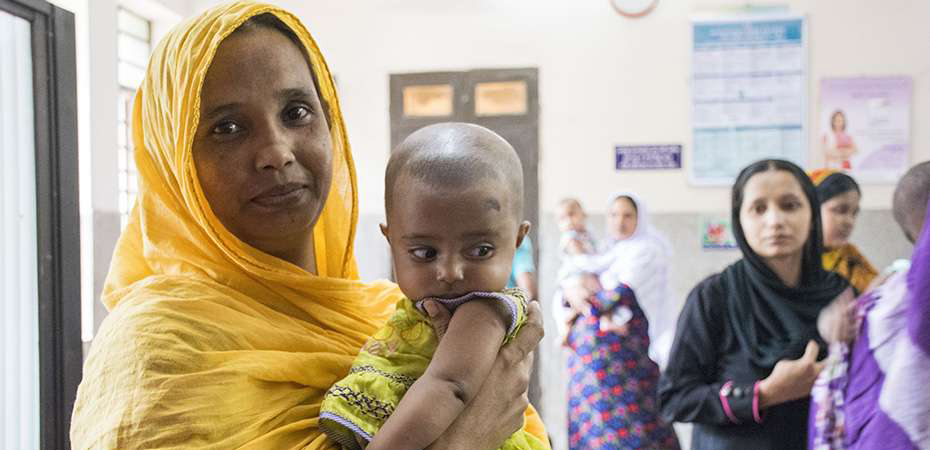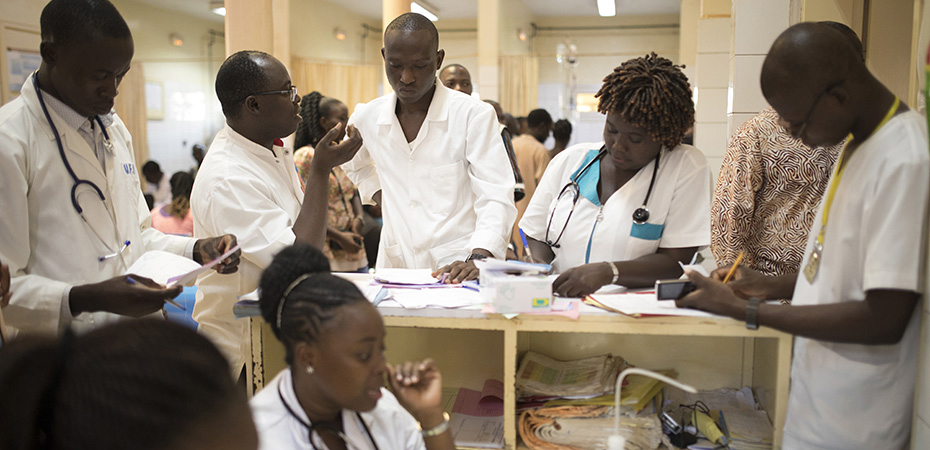Background
Working closely with country partners and World Bank task teams to use data to allocate IDA toward the highest impact interventions for women, children and adolescents is a key part of the theory of change of the Global Financing Facility for Women, Children, and Adolescents (GFF). The GFF therefore conducts regular analyses to monitor changes in International Development Assistance (IDA) commitments to Reproductive, Maternal, Newborn, Child, and Adolescent Health and Nutrition (RMNCAH-N) across its supported countries. These analyses aim to address two main questions:
- How the amounts and proportions of IDA commitments to RMNCAH-N by country have varied over time, including before and after GFF engagement.
- How changes in IDA commitments to RMNCAH-N may have differed between GFF supported countries and a comparison group of GFF eligible but not yet supported countries.
Methodology

Dataset
The data used for these analyses come from the World Bank Operations Policy and Country Services (OPCS) coding system database. It is the World Bank’s definitive institutional source of information about the distribution of IDA commitments to different thematic areas. In the OPCS database, every World Bank project is assigned theme codes, which reflect the project’s main policy development objective(s) as outlined in the Project Appraisal Document (PAD). For each World Bank project, the OPCS database includes the following set of information: the project’s Word Bank Board approval date; total IDA commitments approved by the Board for the project; each level-3 thematic code assigned to the project (the most granular level); and the share of total IDA commitments allocated to each thematic code. The complete updated list of theme codes, including sub-themes, can be found here.
Calculating IDA commitments to RMNCAH-N
The OPCS coding system does not include one unambiguous thematic code for RMNCAH-N. IDA commitments allocated to RMNCAH-N in each World Bank project are instead approximated using a two-step approach. First, projects in the database are categorized as RMNCAH-N projects if they have one of the following 3 RMNCAH-N anchor codes: “Reproductive and maternal health”; “Child Health”; and “Adolescent Health”. Subsequently, within each identified project with one or more of these three anchor codes, IDA commitments allocated to 13 other thematic codes related to RMNCAH-N are summed to determine the total amount of IDA allocated to RMNCAH-N (see methodology note for more details).
Assessing changes in IDA to RMNCAH-N over time
To assess changes in IDA commitments to RMNCAH-N before and after GFF engagement, the median dollar amount and percentage of IDA allocated to RMNCAH-N are calculated and compared between the pre- and post-GFF engagement periods for all GFF supported countries. The change in the median share of IDA going to RMNCAH-N is assessed by examining the change in percentage of IDA going to RMNCAH-N before and after GFF engagement across the distribution of GFF support countries. For each country, the year of GFF engagement is considered as the year in which the first WB co-financed project was approved.
Selecting a comparison group of countries
To contextualize the changes observed among GFF-supported countries, the same calculations were done for a comparison group of countries. The countries selected as the reference group for comparison in this analysis were the 25 IDA-receiving countries eligible for GFF financing, but which are not yet supported by the GFF. Countries eligible for partnership with the GFF are selected based on a combination of factors, including maternal and child mortality, disease burden, income status, population and unmet need for family planning (for more information on eligibility criteria for GFF support, please see the GFF website here). Because GFF supported and GFF-eligible-but-not-yet-supported countries were both selected on the basis of these criteria, the latter group is the closest match to the GFF-supported country group when it comes to these criteria. To align the timeframes with when the GFF/World Bank co-financed projects were approved by the Board for the first wave of GFF countries, 2016 was used to determine the cutoff between the pre- and the post-GFF periods for the comparison group of GFF eligible but not yet supported countries.
Findings

In GFF supported countries, the median country experienced a 40% increase in the percentage of World Bank IDA allocated to RMNCAH-N after engaging with the GFF (see Figure 1). This corresponded to an increase in the median GFF partner country of about $71.5 million in IDA allocated to RMNCAH-N between the pre- and the post-GFF period. Across all GFF supported countries, the amount of IDA allocated to RMNCAH-N increased by $3.2 billion in the post GFF engagement period relative to the pre-GFF engagement period. This is in addition to the $704 million approved for RMNCAH-N from the GFF Trust Fund as of FY 2023.
In the comparison group of GFF eligible but not yet supported countries, the median eligible country experienced a 27% decrease in the percentage of IDA allocated to RMNCAH-N over a comparable period (see Figure 1). The median IDA allocated to RMNCAH-N between the two periods increased by about $12.9 million, indicating that total IDA outpaced the increase in IDA to RMNCAH-N in these countries. In aggregate, the amount of IDA allocated to RMNCAH-N increased by $672 million in the 2016-2023 period in the GFF-eligible group, relative to the 2011-2015 period.
A more complete description of the analysis, including a full description of methods, assumptions, limitations and sensitivity analyses conducted can be found here.

